Research
Research Content Section
26 August 2011
MINOS improved measurement of anti-neutrino mass difference
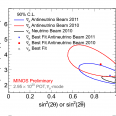
BATAVIA, Illinois The physics community got a jolt last year when results showed for the first time that neutrinos and their antimatter counterparts, anti-neutrinos, might be the odd man out in the particle world and have different masses. This idea was something that went against most commonly accepted theories of how the subatomic world works.
25 August 2011
Nearest supernova of its type for 40 years
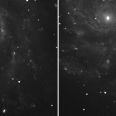
Astronomers have discovered a bright, nearby supernova, otherwise known as an exploding star, and say it is the nearest of its type observed for 40 years.
The supernova was spotted in the Pinwheel Galaxy, M101, a spiral galaxy a mere 21 million light years away, lying in the famous constellation of the Great Bear (Ursa Major).
Scientists from the Department of Physics, University of Oxford made the discovery with their colleagues from the Palomar Transient Factory (PTF) collaboration, using a robotic telescope in California in the United States.
26 July 2011
Hints of a Higgs Boson?
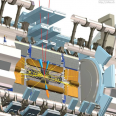
The Oxford Particle Physics group is playing a key role in the search for the Higgs Boson at the Large Hadron Collider. The most recent search results were presented by the ATLAS collaboration at the European Physical Society meeting in Grenoble. These intriguing results show an excess of events that would be consistent with decays of Higgs bosons to pairs of W particles.
26 July 2011
Hints of a Higgs Boson?
The Oxford Particle Physics group is playing a key role in the search for the Higgs Boson at the Large Hadron Collider. The most recent search results were presented by the ATLAS collaboration at the European Physical Society meeting in Grenoble. These intriguing results show an excess of events that would be consistent with decays of Higgs bosons to pairs of W particles.
24 July 2011
New Journal of Physics "Best of 2010"
One of our recent papers, 'Investigation of the role of plasma channels as waveguides for laser-wakefield accelerators' has been selected to appear in the New Journal of Physics' "Best of 2010" collection.
Further details on this paper may be found here.
14 June 2011
Corot Satellite finds ten more exoplanets
The latest exoplanet discoveries made by the Corot satellite will be presented at a meeting at the Institute of Physics on 15 June by Dr Suzanne Aigrain. Corot is a satellite developed by the French Research agency CNES. It uses the transit method to find planets around stars, making very accurate brightness measurements of stars to detect the dips in brightness that occur when planets pass in front of a star, blocking out a fraction of the starlight.
14 June 2011
CoRoT satellite announces 10 new planets
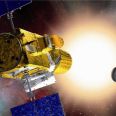
An international team, including Oxford University scientists, has discovered ten new planets. Amongst them is one orbiting a star perhaps only a few tens of million years old, twin Neptune-sized planets, and a rare Saturn-like world.
The planets were detected using the CoRoT (Convection, Rotation and Transits) space telescope, operated by the French space agency CNES. It discovers planets outside our solar system – exoplanets – when they ‘transit’, that is pass in front of their stars.
Sir Martin Wood Lecture
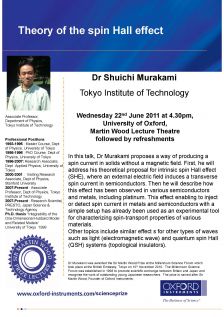
Theory of the spin Hall effect by Dr.Shuichi Murukami, Tokyo Institute of Technology,
Wednesday 22nd June 2011 at 4.30pm,
Martin Wood Lecture Theatre
followed by refreshments
9 June 2011
Learning about Our Galaxy from its Nearest Galactic Neighbours
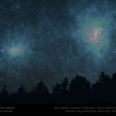
Is the Milky Way a typical galaxy? What can we learn about it from looking at its nearest neighbours, the Magellanic Clouds? Comparing a giant numerical simulation of millions of galaxies, with observations of galaxies from the largest survey of the sky carried out to date, an international team of astrophysicists including Oxford's Phil Marshall set out to answer these questions.
8 June 2011
Green light for Clarendon 2 building!
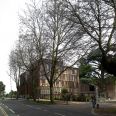
We are very pleased to announce that the Oxford City Council Planning Committee has granted planning permission for the Clarendon Laboratory 2 (CL2) building with a unanimous vote, subject to ratification by the full Council.


